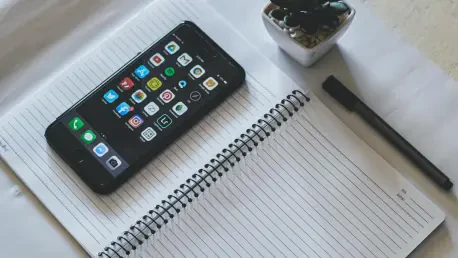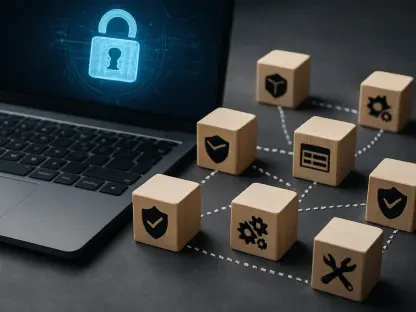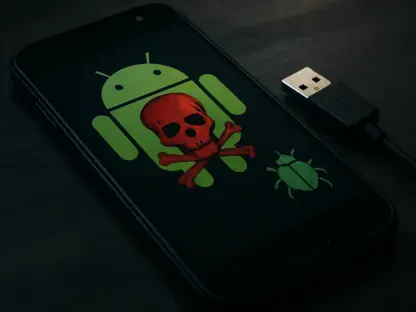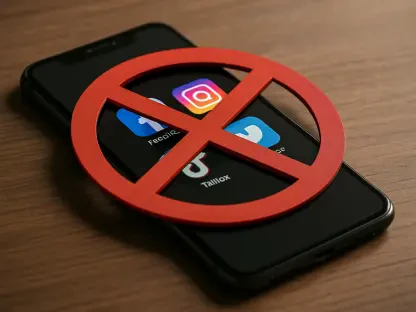In a rapidly evolving digital landscape where personal data can be more valuable than physical possessions, sophisticated phishing scams targeting iPhone users have seen a monumental rise. Recent data has showcased a startling increase, with phishing messages climbing by 202% and credential-based attacks escalating by 703% in just half a year. This surge underscores the urgent call for iPhone users to be more vigilant, as the security risks continue to grow with each passing day. Understanding how to effectively shield your iPhone from such threats has become essential knowledge that could safeguard your sensitive information from potentially crippling attacks.
The Evolving Landscape of iPhone Phishing Attacks
In today’s digital age, phishing attacks on iPhone users have grown far more sophisticated, posing a significant threat to personal data security. Cybercriminals are now adept at exploiting weaknesses even in robust systems like Apple’s iMessage protection system. The standard security measure of iMessage disabling links from unknown senders can be bypassed when users unwittingly respond to illicit messages. By replying, users deactivate this security feature, allowing malicious links to become accessible. This exploit has gained traction rapidly, with scammers sending deceptive notifications, such as fake delivery alerts, prompting recipients to reply “Y” to engage with a link. These links often redirect users to harmful websites designed to extract personal information maliciously.
Nicole Carignan, vice president of strategic cyber AI at Darktrace, recently highlighted the ongoing race between innovation and cyber threats, stressing that as technological advances occur, malicious actors continuously seek novel ways to exploit systems. Indeed, cybercriminals remain relentless in uncovering new opportunities to manipulate users into granting access to their sensitive data, underlining the need for heightened awareness and technological countermeasures. Recognizing these evolving techniques is crucial for Apple users, who must stay informed about the methods employed by scammers and remain cautious about interacting with suspicious messages.
Built-in iPhone Security Features
iPhones come equipped with several built-in security mechanisms designed to help protect users from phishing attempts. One of the prominent features is Safari’s fraud detection, which actively safeguards against malicious websites. When an iPhone user accesses a webpage, Safari scrutinizes the site’s certificate to ensure its legitimacy. It offers warnings when a site presents potential harm, such as attempts to install malware or gather sensitive information. A gray lock icon signifies a secure site, whereas the absence of encryption results in a “Not Secure” warning to alert users.
Additionally, Apple’s iMessage incorporates automatic link-disabled features for unknown senders’ messages, providing a preliminary defense against smishing attacks, although users must remain cautious due to the reply-to-enable exploit. Furthermore, with the introduction of iOS 15, Apple enhanced its Mail Privacy Protection. This feature prevents email senders from tracking users via pixels and obscures critical data like IP addresses and open rates, significantly enhancing privacy measures for Apple Mail users. Collectively, these built-in features reflect Apple’s commitment to maintaining high levels of security for iPhone users through regular updates and technological improvements.
How to Identify Phishing Attempts
Phishing scams often imitate trusted organizations to fool individuals into revealing sensitive data. Identifying these attempts involves understanding common indicators that scammers use. Many such scams involve emails warning that an Apple ID has been suspended due to unusual activity, often accompanied by requests to verify credentials. Messages rife with grammatical errors, unusual formatting, or faulty logos also serve as red flags, signaling potential phishing attempts designed to deceive recipients into acting on false information.
Phishing emails or messages may also request the deactivation of security features such as two-factor authentication—a tactic employed to weaken user account protections. Furthermore, pop-ups promising prizes or warning of non-existent security issues reflect additional phishing strategies to manipulate users. Any communication that urges recipients to reply before accessing a link should be met with skepticism, as they often lead unsuspecting users to harmful sites. Remaining vigilant about these indicators is paramount to defending against phishing attacks, providing a strong barrier against attempts to compromise sensitive data.
Best Practices for Protecting Your iPhone
Adopting robust security practices is indispensable for safeguarding iPhones from phishing scams. A critical measure involves reinforcing authentication on the device by using a strong passcode coupled with biometric verifications like Face ID or Touch ID, which layer security defenses before device access is granted. This approach ensures that even if the passcode is compromised, unauthorized device access remains difficult.
Cautious engagement with messages is equally vital. Assessing the legitimacy of messages from unknown senders is essential, along with avoiding replies that may inadvertently trigger security bypasses. Security experts like Jake Moore emphasize the importance of sustained vigilance with these emerging phishing tactics. Regular updates also play a critical role; ensuring that your iPhone is operating with the latest iOS version is key, as Apple’s routine security patches rectify vulnerabilities that exploiters might use. Moreover, implementing two-factor authentication provides an additional security layer, making unauthorized access even harder, as attackers would need the verification code sent to a trusted device. Being proactive about these best practices strengthens defenses against phishing threats.
The Importance of User Vigilance
In today’s fast-paced digital world, personal data often holds more value than physical assets, and this has given rise to increasingly sophisticated phishing scams targeted at iPhone users. Recent statistics reveal a remarkable increase in such scams, with phishing messages skyrocketing by 202% and attacks aimed at stealing credentials leaping by an alarming 703% within just six months. This dramatic surge highlights the urgent need for iPhone users to enhance their vigilance as these security threats grow in frequency and complexity. It’s becoming increasingly vital for iPhone owners to understand and implement effective strategies to protect their devices and personal information. This knowledge can act as a safeguard against potentially devastating cyber-attacks that could compromise sensitive information. By staying informed and adopting proactive security measures, individuals can better defend themselves against these escalating threats, ensuring their personal data remains secure in an ever-evolving digital landscape.









